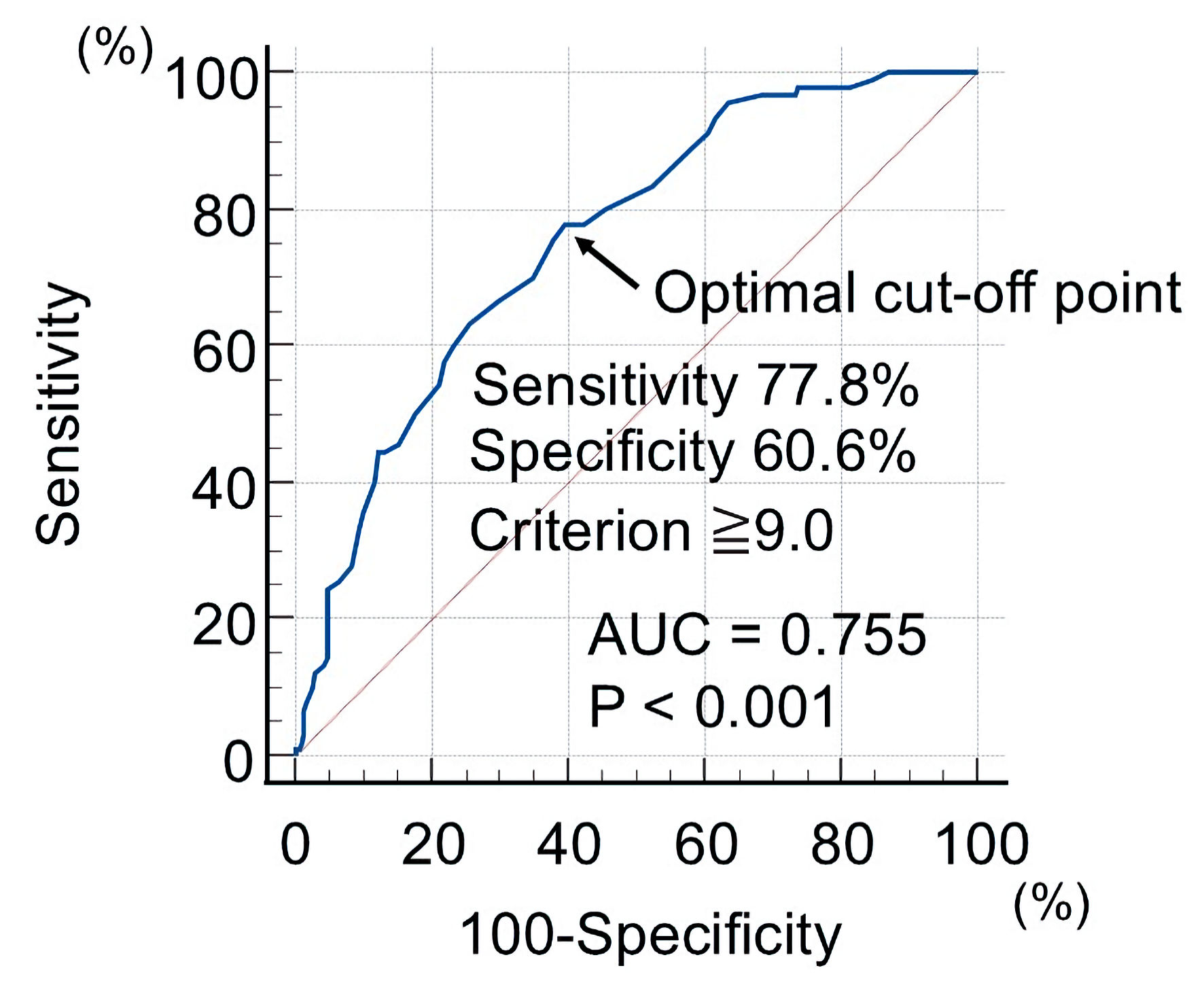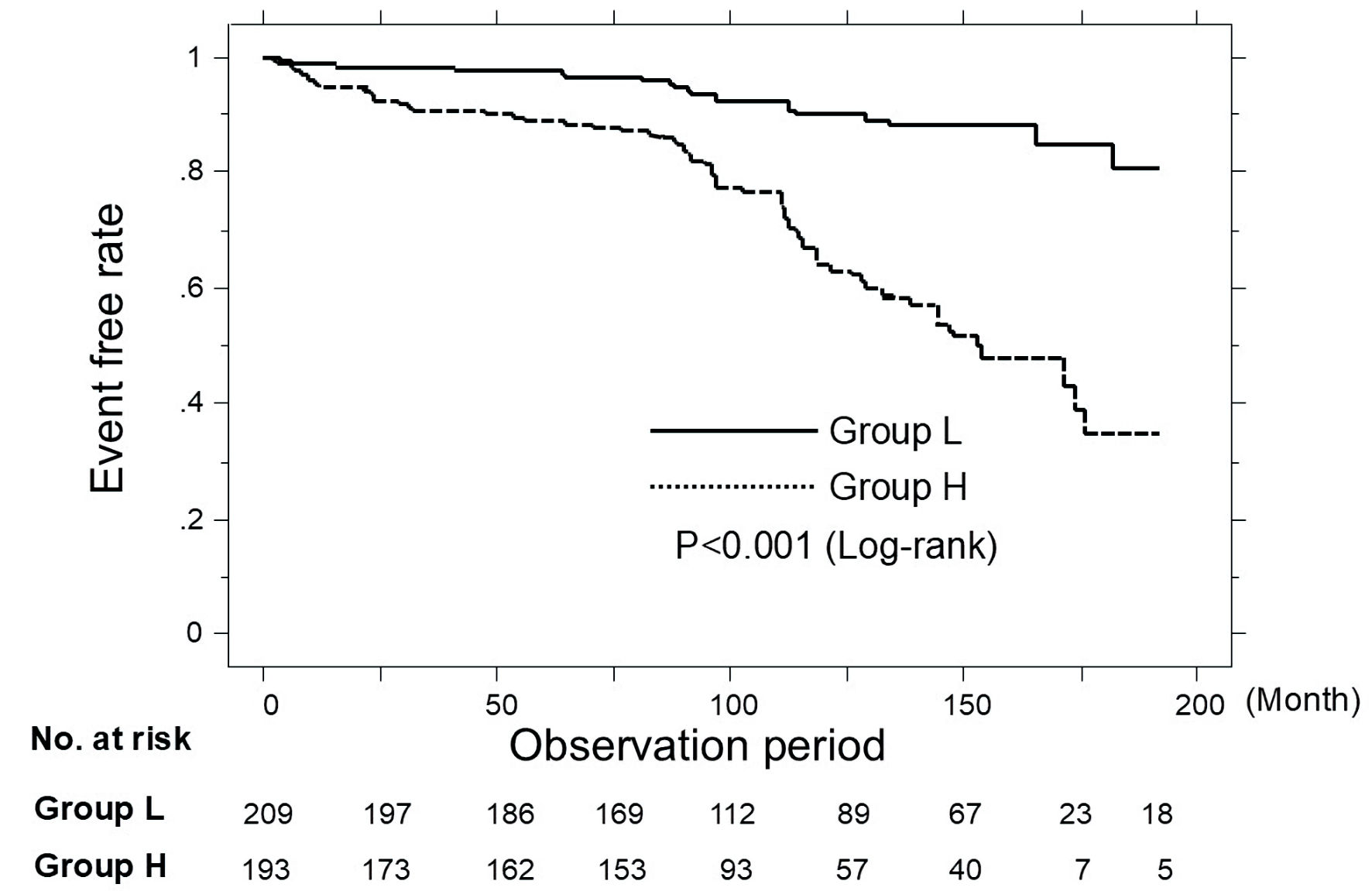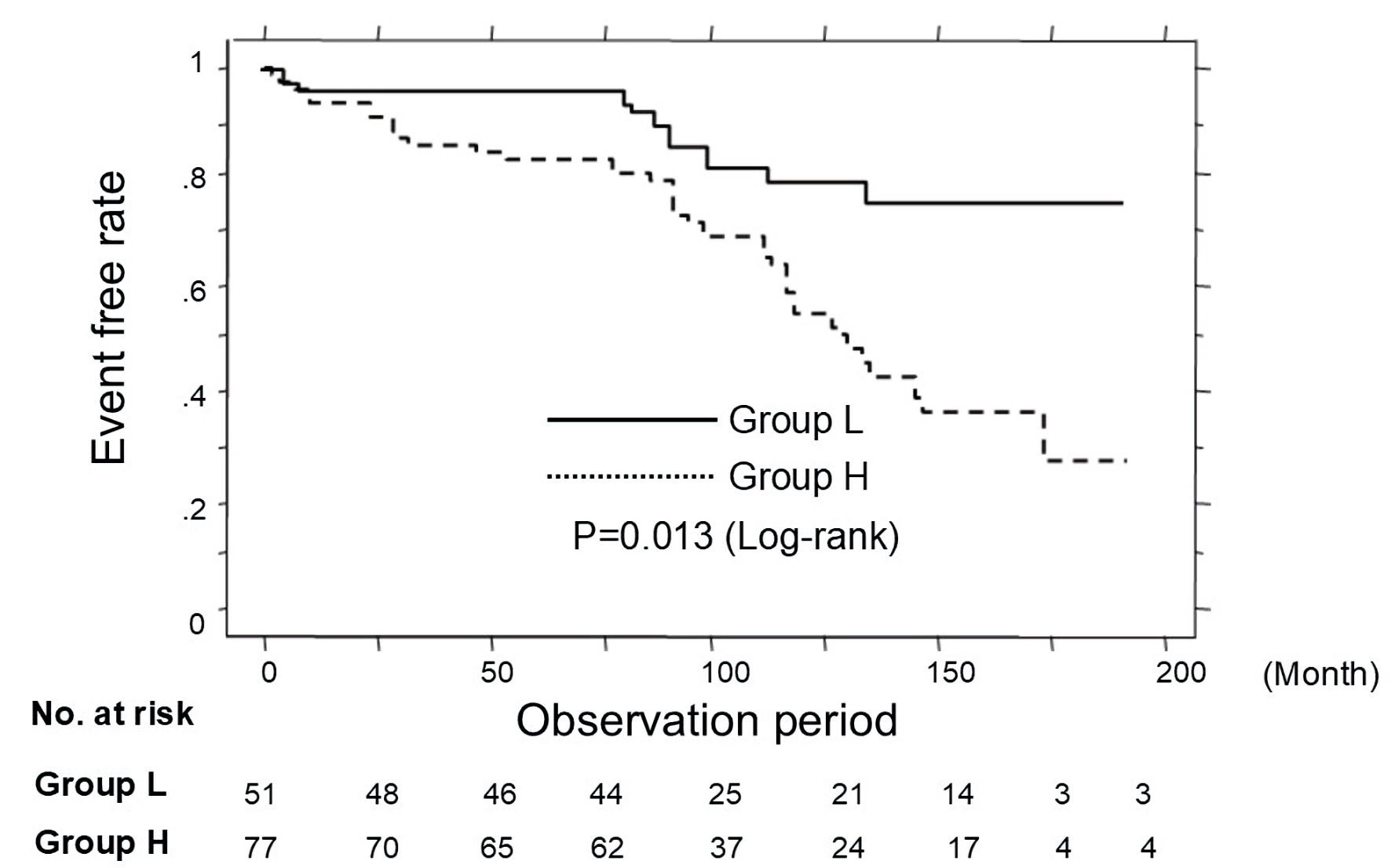
Figure 1. Optimal cut-off value of CAVI to detect primary CVD events using receiver operating characteristic curve analysis. The patients were divided into two groups based on the optimal cut-off value of the CAVI (cut-off value: 9.0): high CAVI group (group H) and a low CAVI group (group L). CAVI: cardio-ankle vascular index; CVD: cardiovascular disease; AUC: area under the curve.

Figure 2. Kaplan-Meier curve analysis for the incidence of primary CVD events in all patients. During the observation period, group H had a significantly higher incidence of primary CVD events than group L (P < 0.001, log-rank test). CVD: cardiovascular disease.

Figure 3. Kaplan-Meier curve analysis in patients not using RAS inhibitor and statin. During the observation period, group H had a significantly higher incidence of primary CVD events than group L (P = 0.013, log-rank test). CVD: cardiovascular disease.


